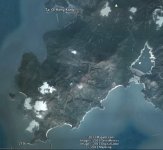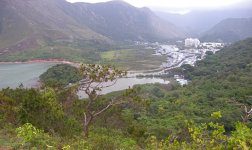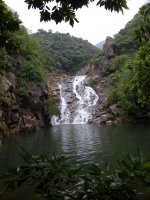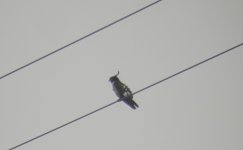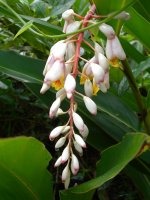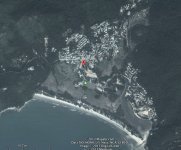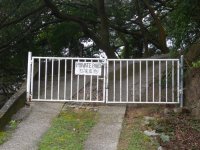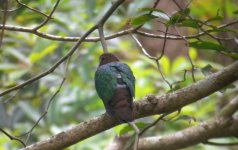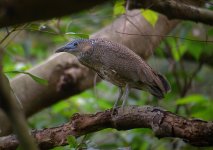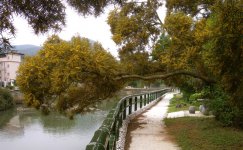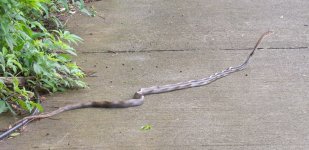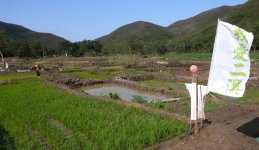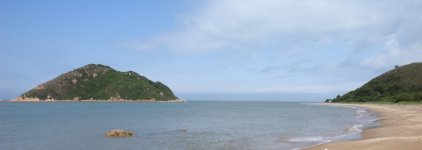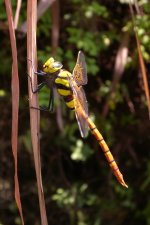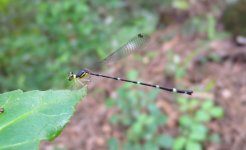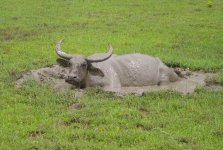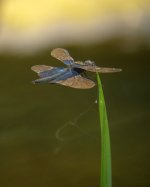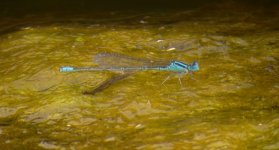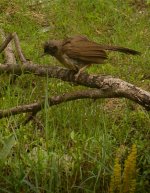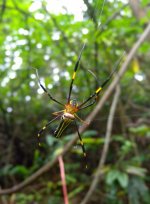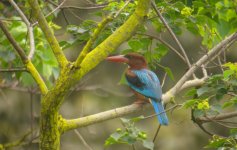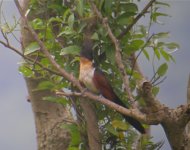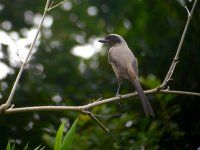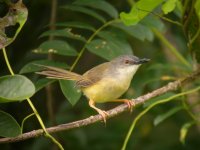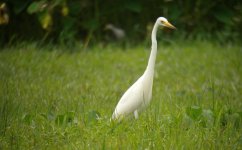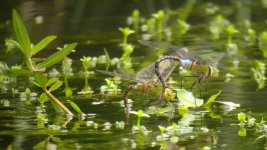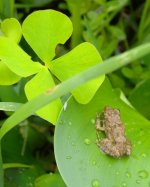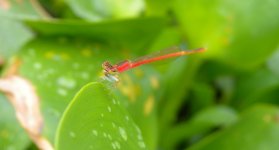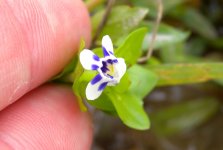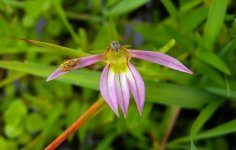MKinHK
Mike Kilburn

They were indeed Jeff - and another good bird on a non-birding outing (albeit with bins this time!).
After a day of rain that continued overnight and more ENE winds the stage seemed well set for another exploration of the southwesternmost tip of Hong Kong - the Fan Lau peninsula.
Waking super early I got the 5:30 bus to Tung Chung and the 6:20 bus to Tai O and started walking the 20-odd KM around 0700. Crossing the causeway that separates Tai O's mangroves from the sea I was surprised to hear two different Dusky Warblers calling, one of which popped up to check me out. Another late migrant - a Little Bunting was grotting about on the path through the village at the other end of the causeway and I had the first of the day's dozen Brown Shrikes, a typical late spring migrant, just before leaving the village.
There were few birds in the forested section of the trail before it came down tot he edge of the sea, with just a single Chinese Goshawk moving ahead from perch to perch without ever showing itself properly to hint at the quality to follow.
As I did emerge I had great views of another Chinese Goshawk flying past close-by and three elegant Grey-streaked Flycatchers hunting from overhanging branches, tall grass and even rocks on the beach. Two Blue Rock Thrushes were chasing each other around the rather nice waterfall a short walk inshore from the path.
As I entered Yi O Grey-streaked Flycatchers, were everywhere, and by the time I'd left the village the count had risen to an amazing 24 birds - some nine more than the previous Hong Kong record!
Other good birds in Yi O included a single Asian Brown Flycatcher, two more Chinese Goshawks a couple of splendidly red-billed Dollarbirds (many of the birds in autumn are black-billed juveniles) half a dozen Yellow Wagtails (five simillima and one macronyx), three flyover Cattle Egrets a female Chestnut Bunting and a couple of Olive-backed Pipits. After a flock of 23 Pechora Pipits was recorded on Po Toi yesterday several flyover passerines had me wondering. Three Arctic Warblers, giving the typical "dzzzik" call were my first of the spring
Emerging over the pass at the southern end of Yi O I was completely taken aback by a superb Black Baza landing on an overhead wire less than 100 metres away! I haven't seen one of the these in six or seven years, so to have one perch so close for several minutes, crest blowing in the wind was almost in the same league as Wednesday's needletails.
The same stretch of path also held three more Chinese Goshawks, another Dollarbird, two Brown Shrikes both Greater and Lesser Coucals, a female Blue Rock Thrush and a rather late and unexpected leucogenys Ashy Drongo.
Fan Lau itself initially seemed rather quieter, but a walk around revealed two more Chinese Goshawks, a magnificent pair of soaring White-bellied Sea Eagles, a Black Drongo, a Chinese Pond Heron, two more Arctic Warblers, five or so Pacific Swifts mixed in with the House Swifts and Barn Swallows and another nine Grey-streaked Flycatchers, bringing the total up to 33! The stream at the end of the rather quiet water pipe trail added some non-bird quality - a magnificent Fiery Emperor dragonfly.
The climb out of Fan Lau delivered yet another Grey-streaked Flycatcher single Dusky and Arctic Warblers, calling Chinese Francolins and my tenth Chinese Goshawk. I thought that would pretty much be it, but the 6km walk along the catchment just kept on delivering - three more Chinese Goshawks, another nine Grey-streaked Flycatchers (making an amazing total of 44), three more Arctic Warblers , four more Brown Shrikes, a couple of Grey Wagtails, a briefly seen male Chestnut Bunting. Challenging the Black Baza for the best individual bird of the day a Swinhoe's Minivet helpfull perched back-on showing nicely brown-edged scapulars and brown rump.
The last birds of a wonderful day of spring migration were an Oriental-type cuckoo sp. with a faint brownish wash to the throat a calling Indian Cuckoo (to add to the Large Hawk Cuckoo that had woken me up much earlier that morning) and 31 Cattle Egrets on the grassy slopes of Shek Pik Dam.
Cheers
Mike
After a day of rain that continued overnight and more ENE winds the stage seemed well set for another exploration of the southwesternmost tip of Hong Kong - the Fan Lau peninsula.
Waking super early I got the 5:30 bus to Tung Chung and the 6:20 bus to Tai O and started walking the 20-odd KM around 0700. Crossing the causeway that separates Tai O's mangroves from the sea I was surprised to hear two different Dusky Warblers calling, one of which popped up to check me out. Another late migrant - a Little Bunting was grotting about on the path through the village at the other end of the causeway and I had the first of the day's dozen Brown Shrikes, a typical late spring migrant, just before leaving the village.
There were few birds in the forested section of the trail before it came down tot he edge of the sea, with just a single Chinese Goshawk moving ahead from perch to perch without ever showing itself properly to hint at the quality to follow.
As I did emerge I had great views of another Chinese Goshawk flying past close-by and three elegant Grey-streaked Flycatchers hunting from overhanging branches, tall grass and even rocks on the beach. Two Blue Rock Thrushes were chasing each other around the rather nice waterfall a short walk inshore from the path.
As I entered Yi O Grey-streaked Flycatchers, were everywhere, and by the time I'd left the village the count had risen to an amazing 24 birds - some nine more than the previous Hong Kong record!
Other good birds in Yi O included a single Asian Brown Flycatcher, two more Chinese Goshawks a couple of splendidly red-billed Dollarbirds (many of the birds in autumn are black-billed juveniles) half a dozen Yellow Wagtails (five simillima and one macronyx), three flyover Cattle Egrets a female Chestnut Bunting and a couple of Olive-backed Pipits. After a flock of 23 Pechora Pipits was recorded on Po Toi yesterday several flyover passerines had me wondering. Three Arctic Warblers, giving the typical "dzzzik" call were my first of the spring
Emerging over the pass at the southern end of Yi O I was completely taken aback by a superb Black Baza landing on an overhead wire less than 100 metres away! I haven't seen one of the these in six or seven years, so to have one perch so close for several minutes, crest blowing in the wind was almost in the same league as Wednesday's needletails.
The same stretch of path also held three more Chinese Goshawks, another Dollarbird, two Brown Shrikes both Greater and Lesser Coucals, a female Blue Rock Thrush and a rather late and unexpected leucogenys Ashy Drongo.
Fan Lau itself initially seemed rather quieter, but a walk around revealed two more Chinese Goshawks, a magnificent pair of soaring White-bellied Sea Eagles, a Black Drongo, a Chinese Pond Heron, two more Arctic Warblers, five or so Pacific Swifts mixed in with the House Swifts and Barn Swallows and another nine Grey-streaked Flycatchers, bringing the total up to 33! The stream at the end of the rather quiet water pipe trail added some non-bird quality - a magnificent Fiery Emperor dragonfly.
The climb out of Fan Lau delivered yet another Grey-streaked Flycatcher single Dusky and Arctic Warblers, calling Chinese Francolins and my tenth Chinese Goshawk. I thought that would pretty much be it, but the 6km walk along the catchment just kept on delivering - three more Chinese Goshawks, another nine Grey-streaked Flycatchers (making an amazing total of 44), three more Arctic Warblers , four more Brown Shrikes, a couple of Grey Wagtails, a briefly seen male Chestnut Bunting. Challenging the Black Baza for the best individual bird of the day a Swinhoe's Minivet helpfull perched back-on showing nicely brown-edged scapulars and brown rump.
The last birds of a wonderful day of spring migration were an Oriental-type cuckoo sp. with a faint brownish wash to the throat a calling Indian Cuckoo (to add to the Large Hawk Cuckoo that had woken me up much earlier that morning) and 31 Cattle Egrets on the grassy slopes of Shek Pik Dam.
Cheers
Mike
Last edited:




